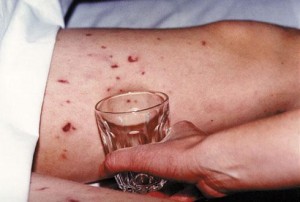Bacterial meningitis and septicaemia affect around 3,400 people in the UK each year, killing more children under the age of five than any other infectious disease. Although great strides have been made over the last decade with the introduction of vaccines for some types of this disease, there is currently no vaccine to protect against meningococcal serogroup B (MenB), which causes the majority of meningitis cases and deaths in the UK.
Meningitis should be treated as a medical emergency because bacterial meningitis can lead to septicaemia (blood poisoning), which can be fatal.
Please take the time to watch this short video bout menignitis…
Bacterial meningitis
Bacterial meningitis is the more serious form of the condition. The symptoms usually begin suddenly and rapidly get worse. If you suspect a case of bacterial meningitis, you should phone 999 immediately to request an ambulance.
There are some early warning signs that you may notice before the other symptoms appear.
Early warning signs
Bacterial meningitis has a number of early warning signs that can occur earlier than the other symptoms. These are:
- pain in the muscles, joints or limbs, such as in the legs or hands
- unusually cold hands and feet, or shivering
- pale or blotchy skin and blue lips
The presence of a high temperature (fever) plus any of the above symptoms should be taken very seriously. Phone 999 immediately to request an ambulance.
Early symptoms
The early symptoms of bacterial meningitis are similar to those of many other conditions, and include:
- a severe headache
- fever (see box, left)
- nausea (feeling sick)
- vomiting (being sick)
- feeling generally unwell
Later symptoms
As the condition gets worse it may cause:
- drowsiness
- confusion
- seizures or fits
- being unable to tolerate bright lights (photophobia) – this is less common in young children

- a stiff neck – also less common in young children
- a rapid breathing rate
- a blotchy red rash that does not fade or change colour when you place a glass against it – the rash is not always present
Babies and young children
The symptoms of bacterial meningitis are different in babies and young children. Possible symptoms include:
- becoming floppy and unresponsive, or stiff with jerky movements
- becoming irritable and not wanting to be held
- unusual crying
- vomiting and refusing feeds
- pale and blotchy skin
- loss of appetite
- staring expression
- very sleepy with a reluctance to wake up
Some babies will develop a swelling in the soft part of their head (fontanelle).
Viral meningitis
Most people with viral meningitis will have mild flu-like symptoms, such as:
- headaches
- fever
- generally not feeling very well
In more severe cases of viral meningitis symptoms may include:
- neck stiffness
- muscle or joint pain
- nausea
- vomiting
- diarrhoea (passing loose, watery stools)
- photophobia (sensitivity to light)
Unlike bacterial meningitis, viral meningitis does not usually lead to septicaemia (blood poisoning).
*Information gathered from NHS direct 2012









